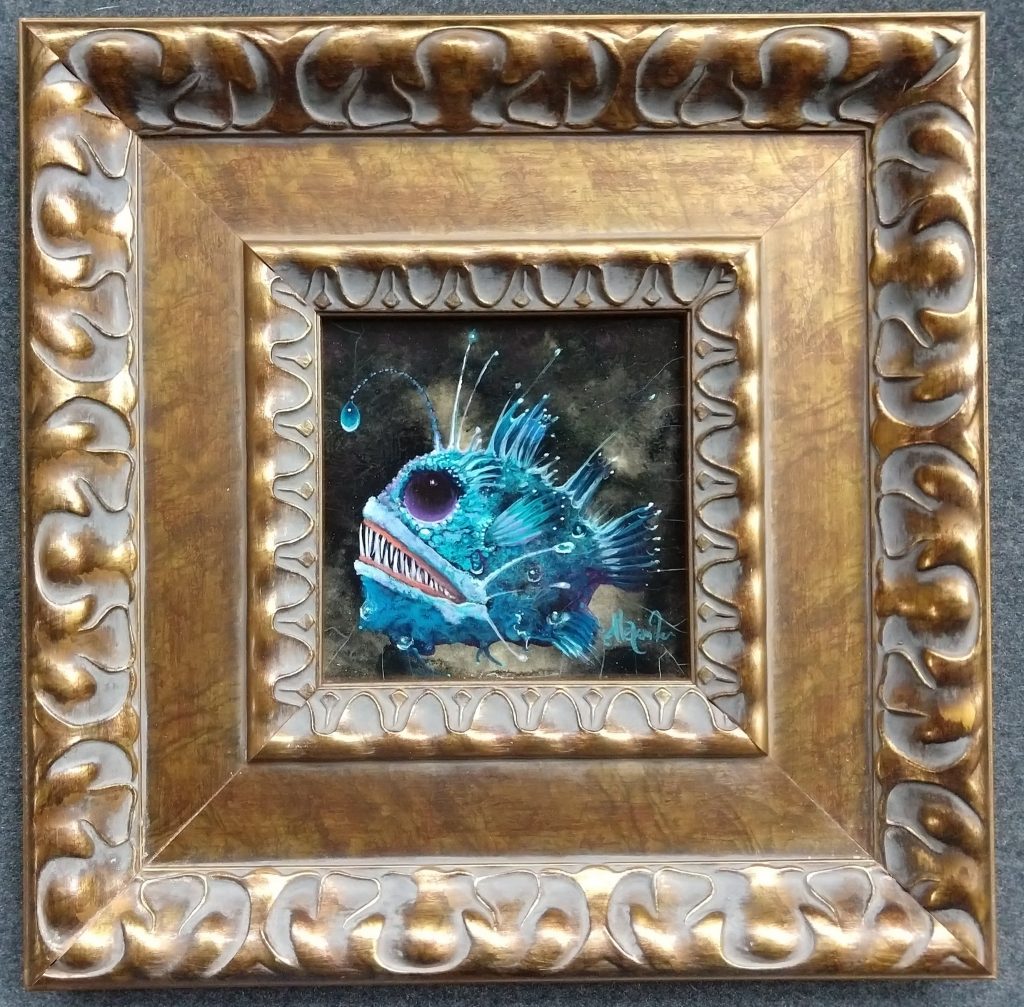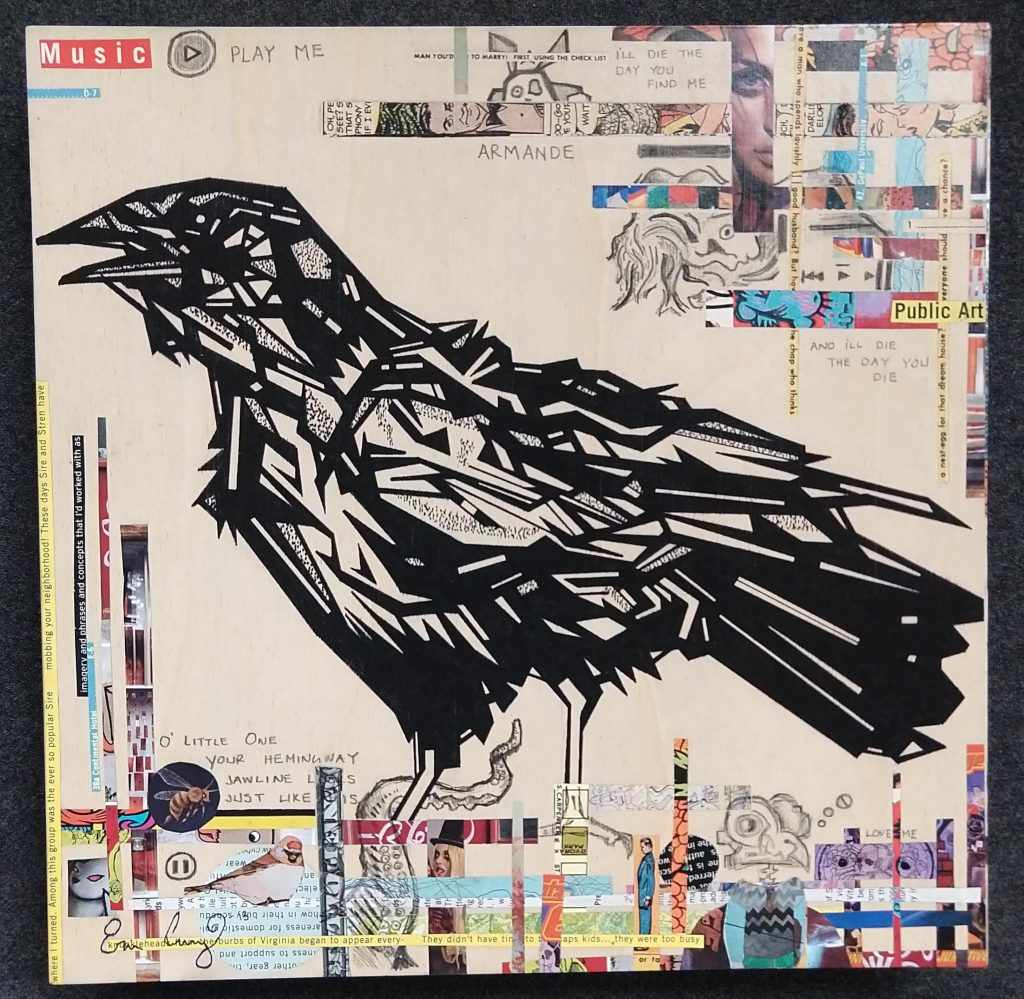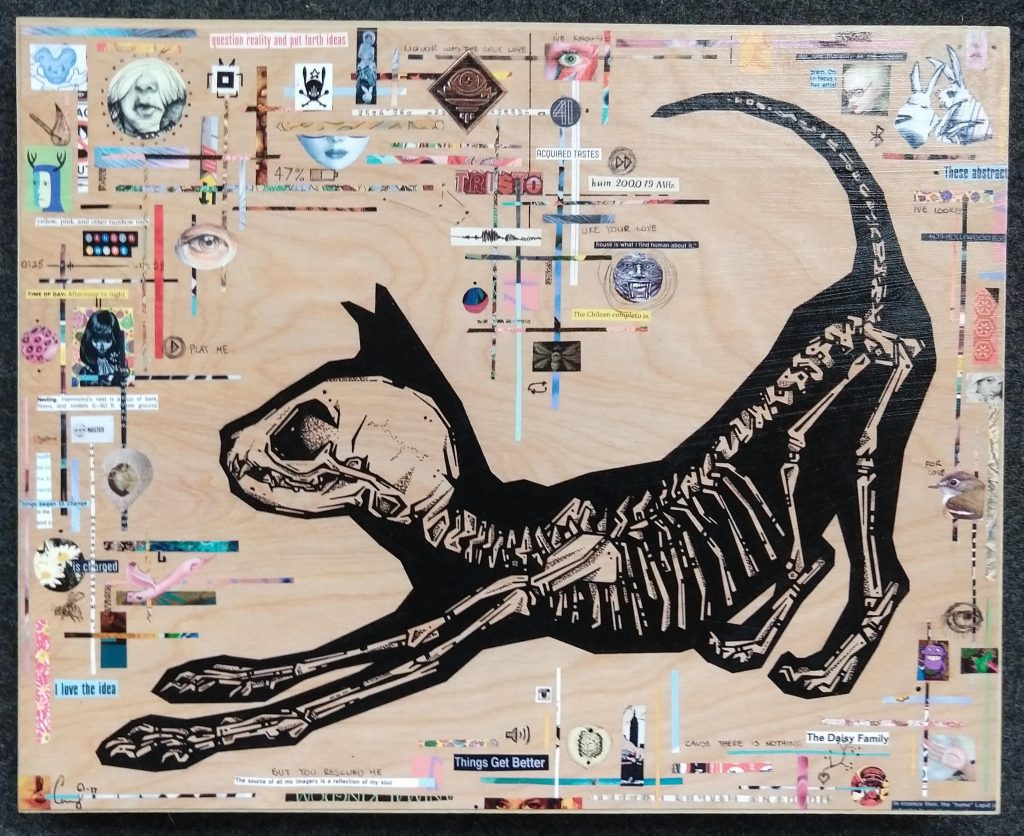Dogwood Festival in Piedmont Park on Saturday. Beautiful day and beautiful chance to add to our art collection.

Angry Angler Fish, oil on wood by R. L. Alexander, Art by Alexander
Beautiful, jem-like oil painting. Got into discussion on his paintings of one of his greyhounds, Botticelli (who had a black and white face perfectly split down the middle), and his many hedgehogs. Some regret we didn’t buy the one with Botticelli on a small hinged altarpiece that he found used, then cleaned up and made into a shrine for the haloed dog.

Descensitizing, mixed-media on wood by Erin Curry, Erin Curry

The Delinquent, mixed-media on wood by Erin Curry
There is so much to see and read in their backgrounds. Small drawings, pasted images, hatches of paper strips with writing or cut from larger images, and text. The clouds of impressions that surround the subjects act as a blend of the viewer’s and the subjects’ thoughts.